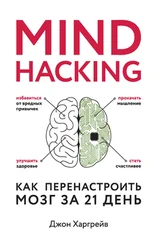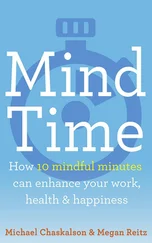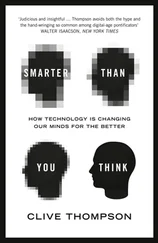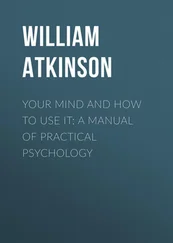The idea took root, and they finally woke up from their shared dream, to find that only three hours had passed. But that idea— This is not real— was so deeply planted in his wife’s mind that she could not escape it, even when she was back in the “real world.” Convinced she was still dreaming, she asked DiCaprio to jump off a building with her, before making the leap herself.
The movie contains three or four layers of meta-goodness, dreams within dreams within dreams, and leaves you with deep, unsettling questions about what reality really is . One of the critical messages of Inception is that implanting an idea in someone’s mind can have a far-reaching impact on the person’s life—for good as well as bad.
We want to use care in choosing our mental loops . If you’re writing code to regulate an automatic braking system or land a plane, a bug can literally result in lost lives. Similarly, choosing a loop like I’m the most important person in the world or I have absolute power over all my enemies , repeated millions of times, can lead to behaviors that are ultimately destructive to you and the world. Put another way: Be careful what you wish for.
Remember, your loops create your thoughts, your thoughts create your actions, and your actions create your life . This is not meant to paralyze you with indecision (a surprisingly common problem among geeks) but to encourage you to consider your positive loops carefully. Here are some tips that may help:
• Include the word “I.”Instead of Self-confidence , think: I am self-confident . Frame it in the first person, as if you are in control (which you are).
• Ask: What do I want? As with training a child or dog, keep it in the positive. Instead of I’m not so self-critical , try I’m gentle with myself .
• Think big.Think: How can I enlarge my sense of what’s possible? Instead of My business is making $20 million , try I’m a successful entrepreneur, adding massive value to the world .
• Create value.Ask yourself how you can add maximum value not just to yourself but to society. Instead of My wife and I get along or I have a successful marriage , try something like Our relationship is a model to the world . Have fun with it!
Take the five goals from Section 2.2 and write a positive thought loop corresponding with each. These are meant to correspond with each of the following goals:
• Feel.From “The Mood Chip,” how do you want to feel? Peaceful? Confident? Happy? Thinking back to your debugging techniques, look for the positive alternatives that you’d like to use to counteract your negative thoughts and feelings. Use these as your +2 Weapons of Mental Fortitude. For example, I am strong, secure, and confident ; I am mentally calm, poised, and relaxed ; or I am comfortable in my own skin .
• Do.From “The $50 Million Inheritance,” what experience would you like to have in life? You may want to make a “moonshot goal,” a big dream to pursue over your lifetime, or you may want to start with a shorter-term goal, something in the next year. For example, I’m an accomplished traveler or I’m making the dean’s list .
• Have.From “The Genie in the Lamp,” what thing would you like to own? I believe we can run into trouble by focusing too much on material possessions, but this one can be fun if we concentrate on how they can add value to society. For example, I own a beautiful house, where we throw many fine parties , or I have my own jet, which I use to host my private mind hacking retreats .
• Give.From “Your Evolution Contribution,” what is it that you want to give back to the world? Remember that society generally rewards those who give it what it wants, in equal measure to the value created—so the bigger you think, the greater your potential reward. I am eradicating malaria and I am making Internet access available to the entire planet are great goals, but so is I am creating music that benefits the world and I am raising a magnificent family .
• Be.From “The Funeral Speech,” who is it that you want to be? This is not what you want other people to say about you but what kind of person you want to be , at your core. Ben Franklin’s list of thirteen virtues are an excellent place to start, as he consolidated them from many centuries of great philosophers and thinkers before him. For example, I am trustworthy, always following through on my promises , or I am generous, freely giving of my talents to benefit the world .
Choosing these loops can be hard work, and if you already suffer from the curse of perfectionism, you may just need to write I give things my best effort and happily move on , thus giving it your best effort and happily moving on.
As much as I’ve said about choosing your loops well, I now want to encourage you to actually make a choice . The award-winning psychologist M. Scott Peck once said that as long as our will is firmly committed toward the good, we can trust that our subconscious is at least one step ahead of our conscious and thus feel secure in our decisions. 6Besides, just as with coding, you can always rewrite your positive loops later.
MIND GAME
Writing Your Positive Loops
Complete the five imagination games in this chapter. Write down each positive thought loop on the practice sheet at the end of the book. Focus on getting it done, not getting it perfect; you can always rewrite your code later.
You’ve now learned how to become aware of your mind, identify your negative thinking, and properly code positive thought loops to drive your mind in new directions of happiness and success. One thing still remains, however: you have to do the work .
If we leave off here, we are like the programmer who dreams up an amazing new app but never finishes it. We are like the aspiring musician who dreams of the stage but rarely practices. We are like the person with big dreams but who exerts little effort in bringing them to fruition.
In the next section, you’ll learn techniques for reprogramming your mind. These are the day-in, day-out practices that you’ll use to bring your ideas into the world. Backed by research and proven by science, these mind hacks will teach you how to make your dreams a reality.
Let the true mind hacking begin.
PART THREE
REPROGRAMMING
[3.1]
Visiting the Thomas Edison National Historical Park in West Orange, New Jersey, should be on every geek’s list of things to do in life.
Advertised as “Where Modern America Was Invented,” 1it’s an enormous brick building where, for more than forty years, Edison’s team of geniuses turned out innovation after innovation, including the motion picture camera and movies, improved phonographs and sound recordings, and electric inventions like the alkaline storage battery. It was the Google of its day.
Edison is remembered today as a prolific inventor (over one thousand patents in his name), but perhaps his most important invention was the process of invention itself . The meta-invention of how to make more inventions is Edison’s true legacy. Edison invented the modern research and development facility, and if you go to West Orange, you can still walk through it.
It’s fascinating, and instructive, to see how Edison laid out the complex. Tucked away in a corner of his expansive office was a small bed. Edison was a believer in the power of power naps: after ruminating on a difficult problem, he would retire in the corner for a microsleep, letting his mind work on a solution. When the idea came to him, he would hurry to his desk and write it down.
Читать дальше
![Джон Харгрейв Mind Hacking [How to Change Your Mind for Good in 21 Days] обложка книги](/books/404192/dzhon-hargrejv-mind-hacking-how-to-change-your-min-cover.webp)











